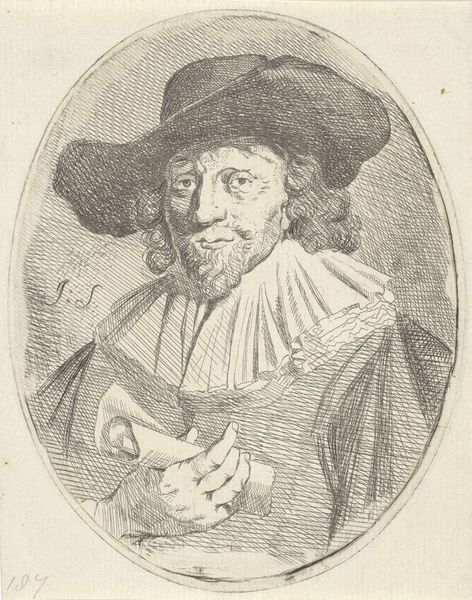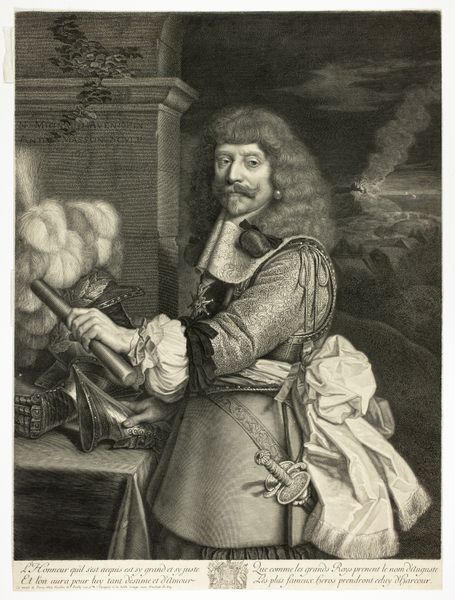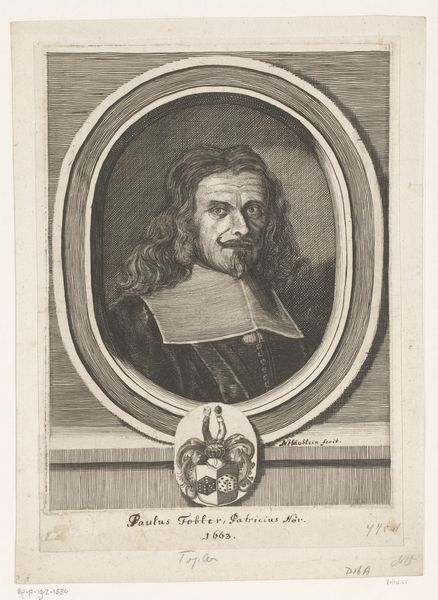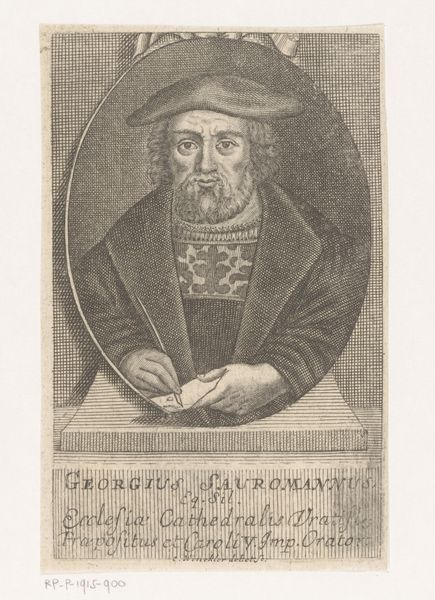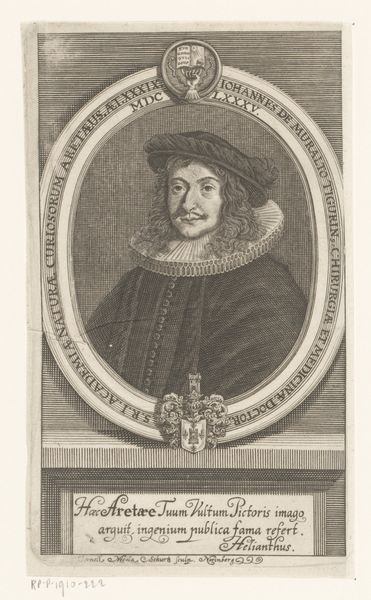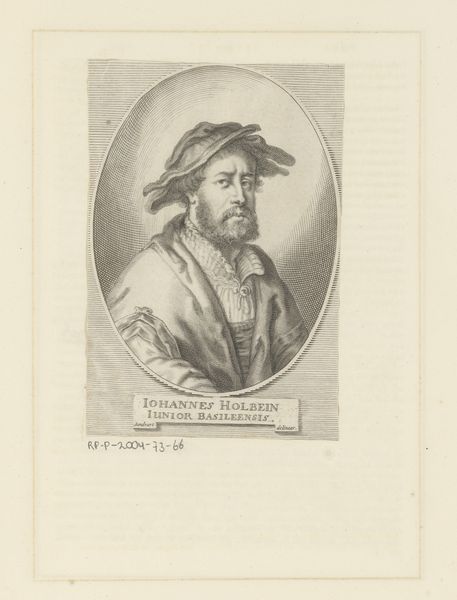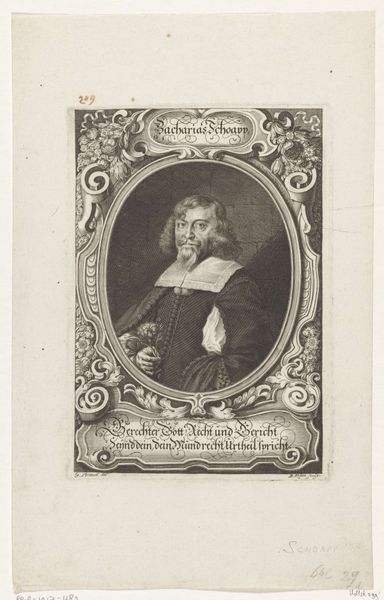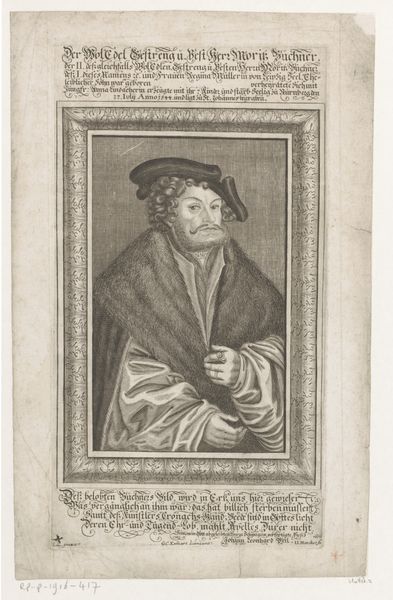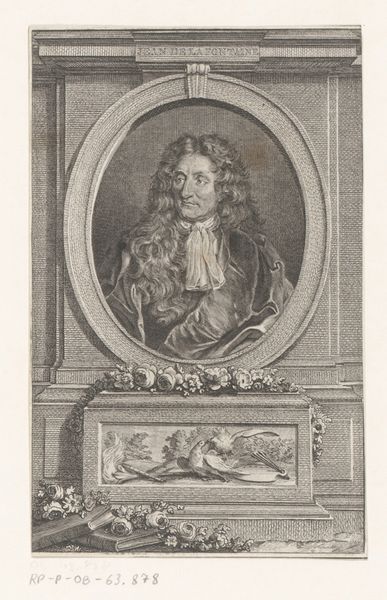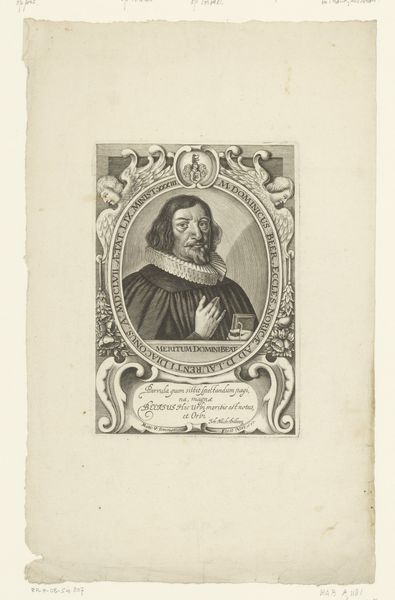
drawing, print, engraving
#
portrait
#
drawing
# print
#
old engraving style
#
engraving
#
realism
Dimensions: Sheet: 8 1/4 × 6 1/2 in. (21 × 16.5 cm) Plate: 7 3/8 x 5 11/16 in. (18.8 x 14.5 cm)
Copyright: Public Domain
Curator: This is Adam von Bartsch's "Portrait of Ferdinand Bol," an engraving dating from the early 19th century. The print depicts Bol posed as though leaning out from a stone window. Editor: My first thought is that it exudes a sense of relaxed confidence. He is looking at us as if he knows a secret and finds it amusing. There is something theatrical about his pose as well. Curator: It is interesting to note that Bartsch worked as a curator at the Imperial Picture Gallery in Vienna. This gives us insight into his process; as an engraver, he was meticulously reproducing existing images, acting as a mediator of art and a facilitator for its broader distribution through printed media. Editor: The window or frame is suggestive, like a proscenium arch framing an actor. I'm intrigued by the subtle way the hat, slightly askew and feathered, speaks of status. It is this playful imbalance, set against the rough stone, that conveys an earthy nonchalance that seems very deliberate. It's more than just a portrait; it presents a specific image of masculinity, a man in control of his position. Curator: Considering the time, this portrait, realized in a series of etched lines and crosshatching, points to how prints facilitated access to portraiture for a burgeoning middle class. Prior to photographic reproduction, engravings such as this fulfilled a vital need, illustrating prominent members of society while operating within an intricate and ever-shifting commercial network. Editor: The hands clasped lightly, almost casually...they hold an unresolved tension. Is it peace or expectation? It mirrors the societal position: holding something back. I wonder, what narratives did viewers at the time weave around this face and stance? What did his expression communicate in the visual language of the day? Curator: These visual languages and commercial applications are intimately connected. We see here the way in which artistic labor responded to a specific set of material conditions. Editor: I see a man performing his identity and Bartsch adeptly using symbols to communicate more than mere physical likeness. Fascinating how an image captured in ink centuries ago continues to pose intriguing questions.
Comments
No comments
Be the first to comment and join the conversation on the ultimate creative platform.



